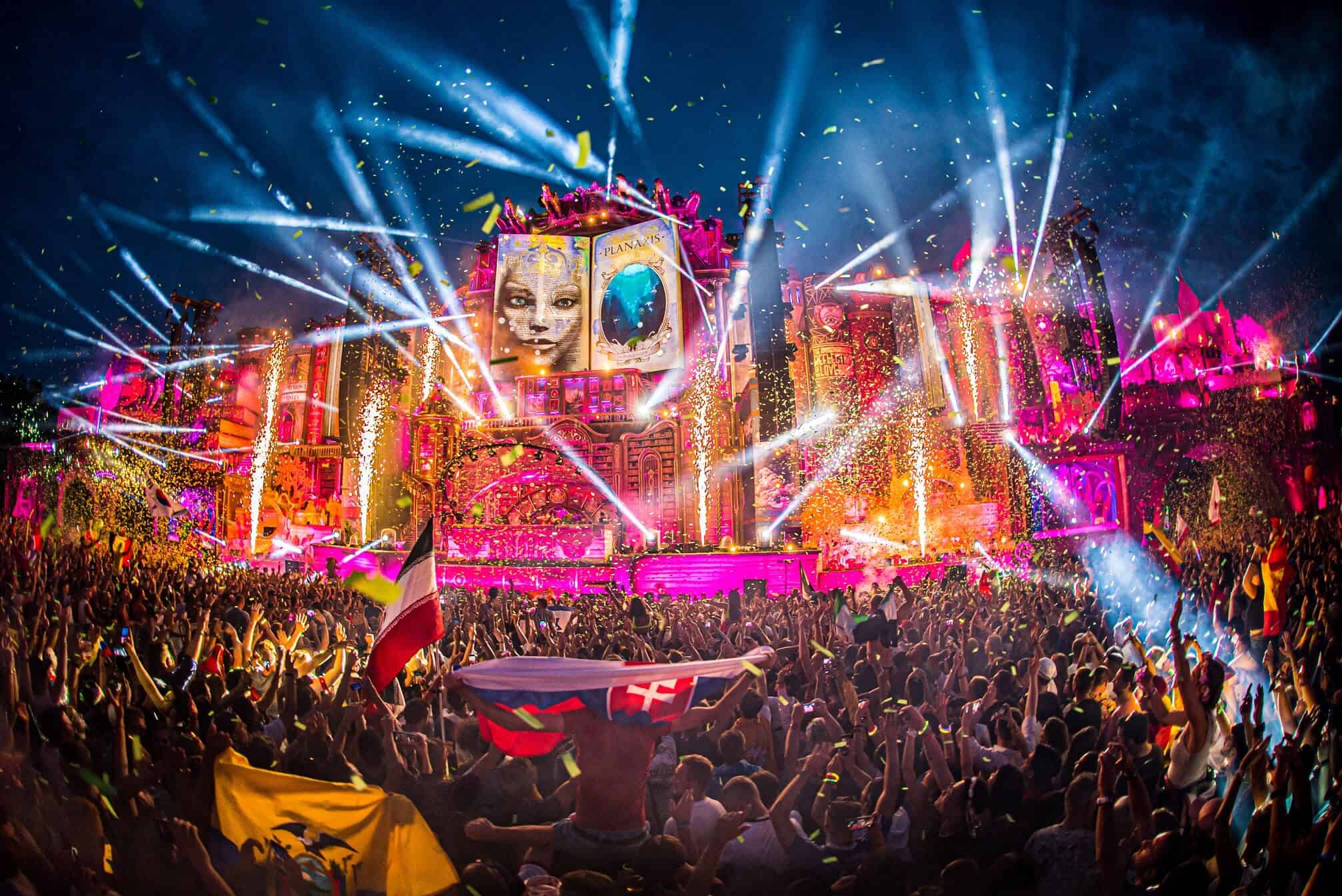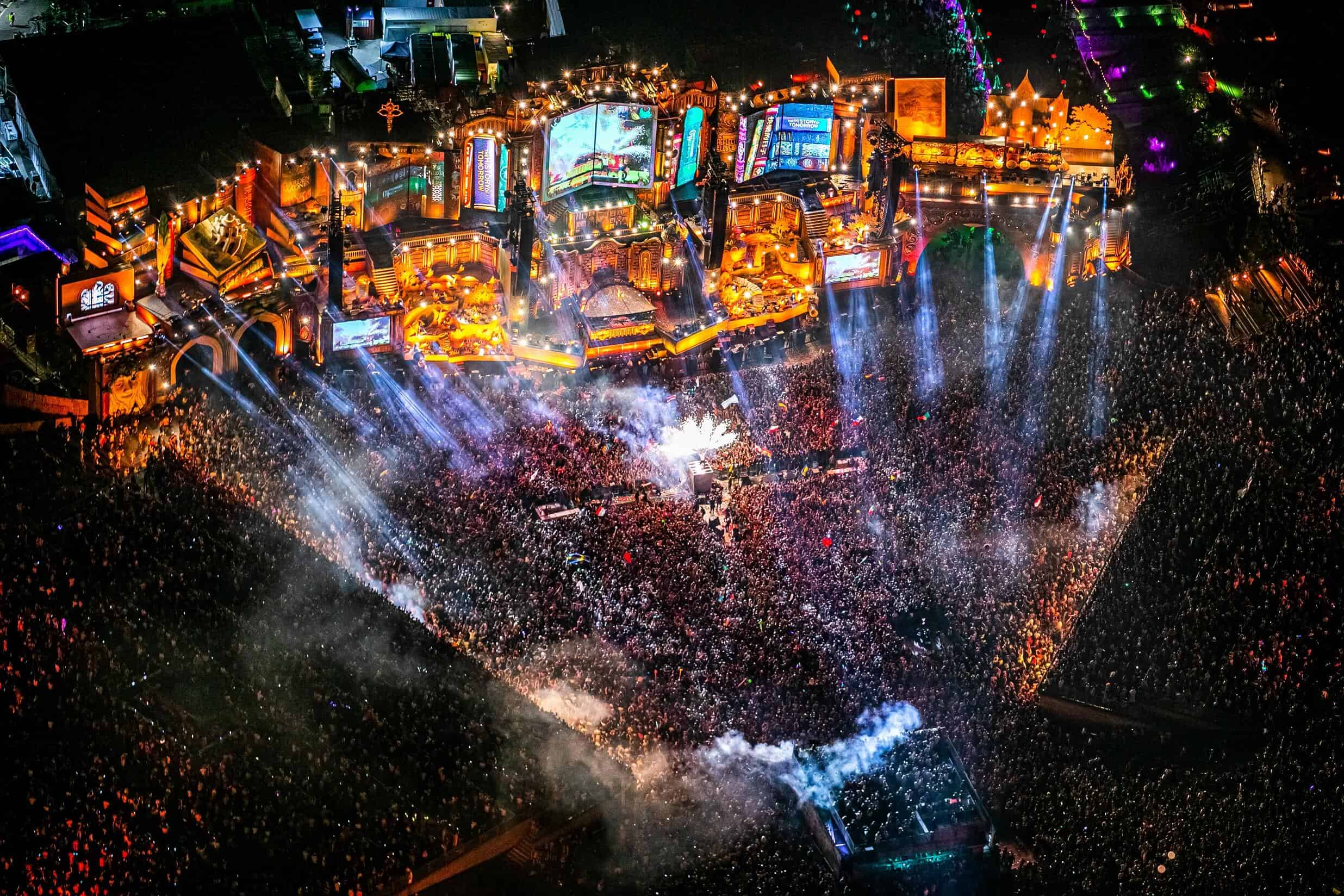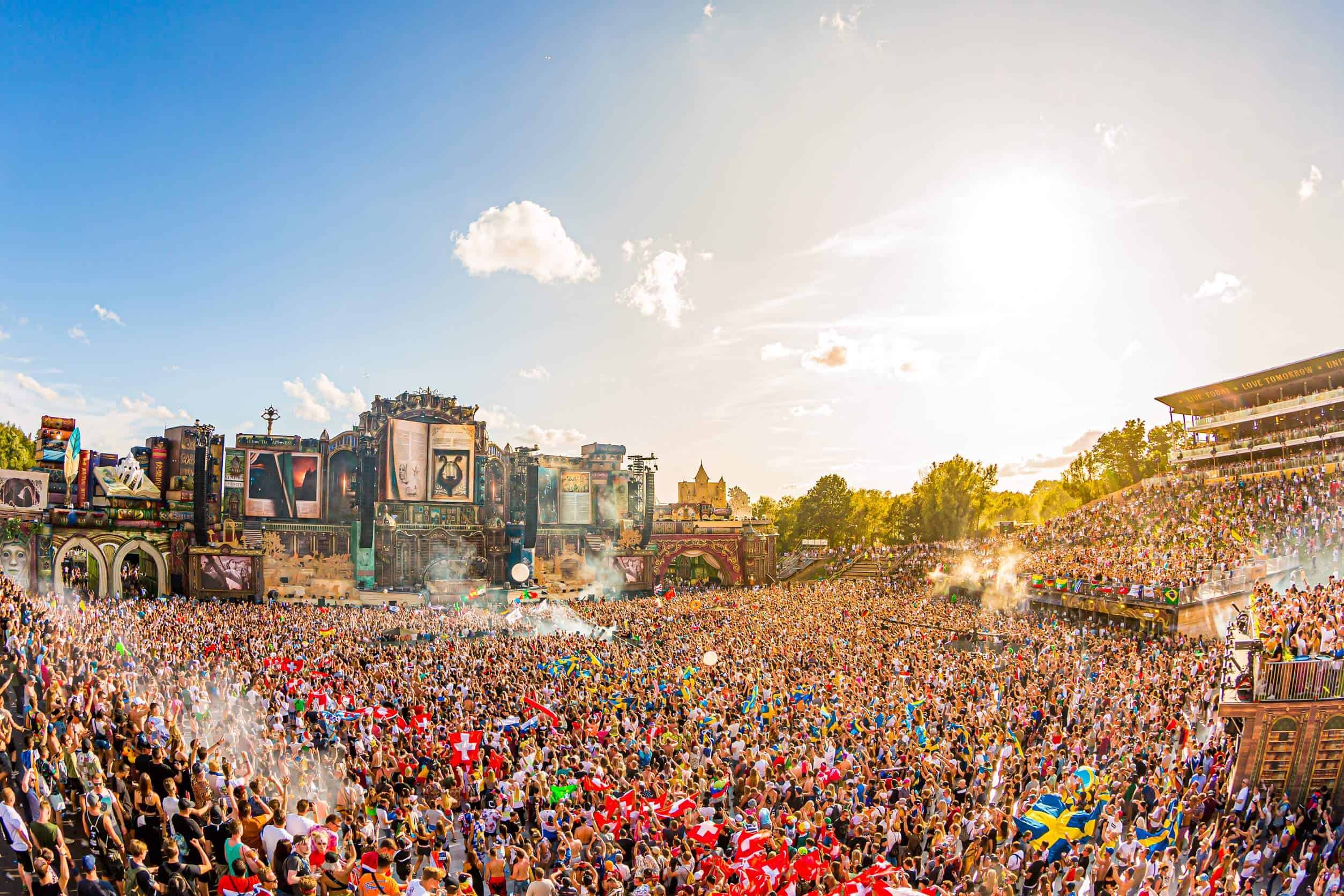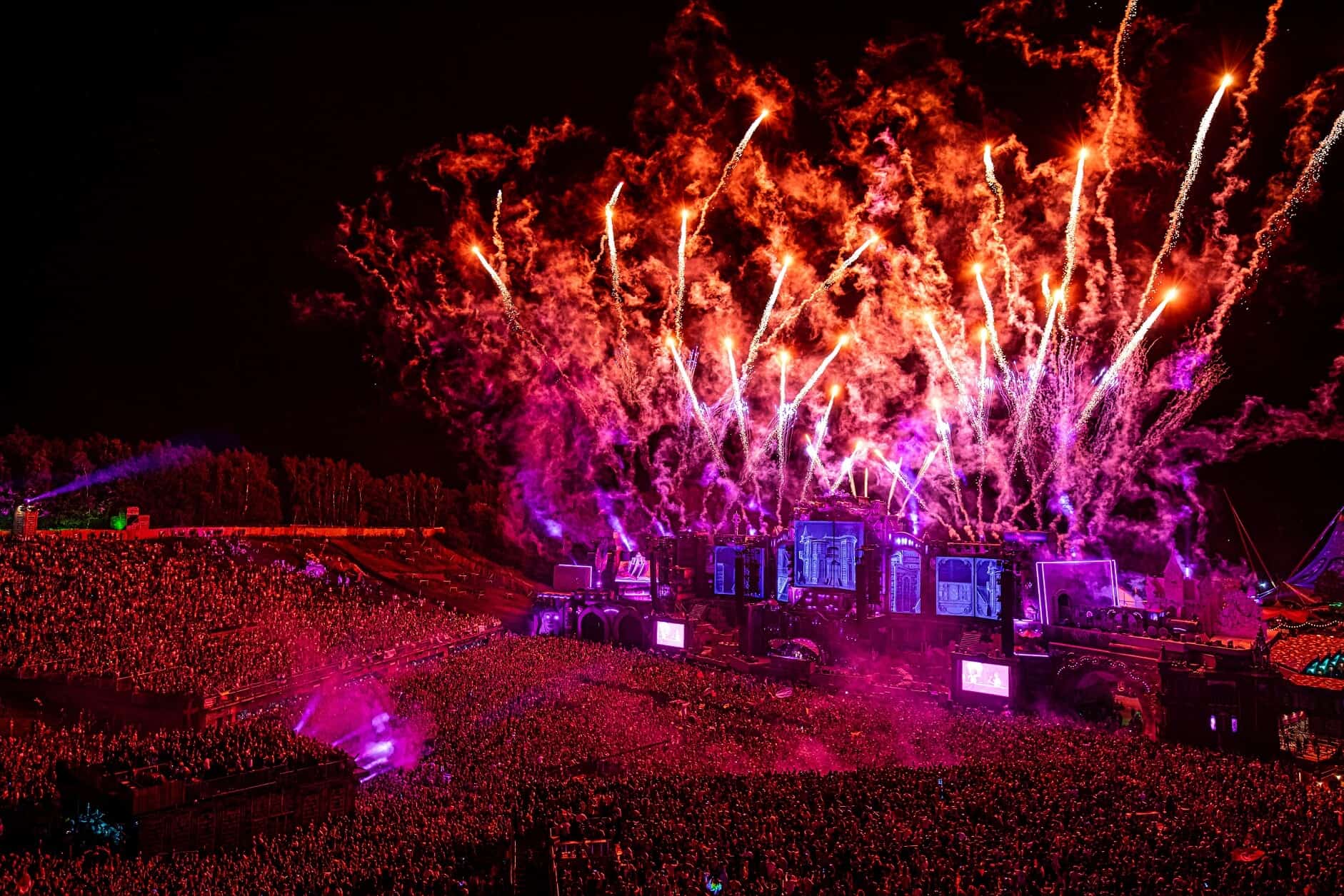

Tomorrowland: A history of the festival
This month, the holy grounds of Tomorrowland finally reopen their gates to welcome back the people of Tomorrow. We’re looking into the history of Tomorrowland, and how it went from a small, local event to an international spectacle.
After a two-year pause in 2020 and 2021 due to the pandemic, all systems are go and the site is currently well into its buildup of the various stages and everything in between. To celebrate the 2022 edition (which is now three weekends long), we’re looking back upon the history of Tomorrowland. From where it all began to some lesser-known facts that you may find interesting, we’re diving straight into it.
Humble beginnings
It’s hard to believe that Tomorrowland wasn’t always this massive, global spectacle but this was the reality for its first edition on 14 August 2005. With a tiny mainstage and not many other stages, it was more of an event that attracted locals rather than those from all corners of the earth. Nevertheless, the lineup was just as stacked back then as it is today, with the likes of Armin van Buuren, Coone, Justice, and Ferry Corsten in attendance. It is said that around 10,000 people attended this first edition with the organisers even giving out free tickets to fill the venue, which is pretty hard to believe when you look at images of the mainstage crowd from more recent editions. From this, we know that the history of Tomorrowland is a complex and interesting one.

Image Credit: Tomorrowland
Growth and expansion
Starting to make a name for itself in the electronic festival circuit, many others started to pay attention to this rapidly growing event. After a couple of years of building itself up and establishing a solid foundation, Tomorrowland was starting to turn heads in a serious way, which resulted in its third edition in 2007 to expand to 2 days for the first time in its history. On 28 & 29 July, the mainstage size and design also started to grow with its exceedingly bigger attendance size. Just a year later, it was the first time that they had over 100 artists on the lineup, fitting with the demand to be part of this event and make history, with over 50,000 attendees for the first time.
Introducing a theme
Part of what has made Tomorrowland so well known and set apart from any other event is how it goes all out with its themes, being totally unique and different every year. For the first few editions though, there was no theme involved, and this was only an addition to the experience starting from 2009. This was the year that saw Tomorrowland really up their game when it came to not only the lineup, but the immersive designs and overall effort to create even more of a unique fan experience. Masker was the theme’s name, and saw the mainstage match it perfectly: a huge, purple masked face. What was also fun about this is the fact that the design was thoroughly thought out and was cleverly integrated into the DJ booth, with mainstage performers being situated inside the mouth of the Masker. As everyone would come to know, the theme was something that worked wonders for the popularity of the festival and the growth of a storyline surrounding it all.

Image Credit: Tomorrowland
The formative years
A lot had happened between the 2010, 2011 and 2012 editions. Seen by many as three of the most pivotal editions in Tomorrowland’s history, these are three editions that put the festival on the map forever.
2010:
Breaking records, the festival managed to sell out just a few days ahead of the event and saw its attendee size hit an all-time high at an estimated 120,000 people in just two days. The ‘Zon (sun)’ theme saw the iconic blowup rainbow hit the mainstage (which fans will see is now paid homage to within the entryways and exits of Dreamville). The likes of Swedish House Mafia also performed what would go on to be considered one of the most iconic sets of the festival’s history that year.
2011:
For the first time, Tomorrowland expanded to three days in 2011 and it has never looked back. In line with how it usually sells out in today’s world, the festival managed to sell out only a few days after the presale had ended, proving that it had officially become one of the biggest, most in-demand festivals in the entire world with around 180,000 people enjoying the festivities that year. Due to its notoriety, it gained its first-ever award nomination for Best Music Event at the International Dance Music Awards.
2012:
This edition is highly regarded and is perhaps one of the most legendary to date. Its theme, The Book of Wisdom, was the one chosen to make a return for its 15th anniversary in 2019. Although it’s a known thing that now, those who have Belgian residency get a dedicated ticket sale, this edition was the first time that this idea was introduced. As a nod to where it all started and wanting to, in a way, give back to its local community, around 80,000 tickets were set aside for Belgian citizens. By now, it was proving to be notoriously difficult to get tickets, proven further by nearly 200,000 tickets selling out in less than one day. It is also said that close to 2 million people were signed up on the waiting list for the chance to attend that year. After being nominated the year earlier at the International Dance Music Awards, it was nominated for the second year in a row but this time, it beat its competitors to win the award. This isn’t the only award it won that year either, as DJ Awards voted it the Best International Dance Music Festival.

Two weekender
When a double weekend edition was introduced in 2014, it was only temporary until it became permanent three years later in 2017. As 2014 was its 10th anniversary, they extended the celebrations to not only make it special but also to meet the high demand for tickets at the same time. Nowadays, it would be weird to think of Tomorrowland as just a one-weekend deal.
Fun facts
1. Ever been on the Ferris wheel towards the back of the Freedom Stage? If you have, you’ll know that there are some seriously epic views to take in, not just of the whole festival grounds but the surrounding villages and towns, too. Did you know, though, that this particular Ferris wheel is Europe’s biggest? It sits at 60 metres high.
2. David Guetta is the only artist out of the entire history of the festival who has played from the very start, at every edition. Although he’s breaking his streak for the first time this year, he still holds this record.
3. With such large stages and productions, comes many, many wires. To deal with all of these pesky wires, there is a 100ft deep tunnel underneath the grounds where all these wires are fed through.
4. You can rent a mansion to stay in at Tomorrowland. Yes, seriously. Each private mansion hosts up to 10 people and includes amenities such as your own personal staff (including a masseuse and a butler), a jacuzzi, and your own garden to name just a few things. It goes without saying that this is a mega pricey option, but being situated in the peaceful countryside at just a stone’s throw away from all the action sounds tempting!
5. Festival-goers know that you can make use of the many different restaurants on-site via bookings on the festival website, but did you know there’s an extra hidden restaurant that’s not available to just anyone? You may never have seen it, and for good reason. It’s hidden inside of the mainstage. If you’re sneaky, you could have spotted one of the windows which offers views out onto the crowds, but most people would pass near it and never know. To top it off, the food is prepared by two Michelin star chefs and could set you back around €22,000 for a group of 12 (which also could be just rumours, and a solid price isn’t out there for public knowledge) although it is said that this money goes to charity.
As we have looked back upon the interesting history of Tomorrowland edition’s past, we now look to the future. As we prepare for three whole weekends of madness in just weeks, we cannot wait to see how special the team makes this return, and how this will rewrite the history of Tomorrowland as we know it.
Featured Image Credit: Tomorrowland


- Arodes cover Interview
- Armin van Buuren: Breathing In [Exclusive Interview]
- Ibiza 2024: What To Expect
- Burak Yeter: A Day In Space [Exclusive]
